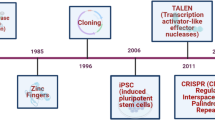Abstract
The mRNA differential display technique was performed to investigate the differences in gene expression in the liver tissues from Meishan and Large White pigs. One novel gene that was differentially expressed was identified through semi-quantitative reverse transcriptase polymerase chain reaction (RT-PCR) and the cDNA complete sequence was then obtained using the rapid amplification of cDNA ends (RACE) method. The nucleotide sequence of the gene is not homologous to any of the known porcine genes. The sequence prediction analysis revealed that the open reading frame of this gene encoding a protein of 501 amino acids has high homology with the lipase, hepatic (LIPC) of seven species—cattle (82%), rhesus monkey (79%), chimpanzee (78%), rabbit (77%), human (78%), mouse (73%) and rat (72%)—so that it can be defined as the swine LIPC gene. Phylogenetic analysis revealed that the swine LIPC gene has a closer genetic relationship with the LIPC of cattle. Tissue expression profile analysis indicated that the swine LIPC gene is also differentially expressed in other detected tissues from Meishan and Large White pigs. Our experiment suggested that the swine LIPC gene might play an important role in the superabundant fat deposition of Chinese pigs.





Similar content being viewed by others
References
Datta S, Luo CC, Li WH, VanTuinen P, Ledbetter DH, Brown MA, Chen SH, Liu SW, Chan L (1988) Human hepatic lipase. Cloned cDNA sequence, restriction fragment length polymorphisms, chromosomal localization, and evolutionary relationships with lipoprotein lipase and pancreatic lipase. J Biol Chem 263:1107–1110
Liu YG (2009) Isolation, sequence identification, and tissue expression profile of 3 novel porcine genes: NCF2, BCKDHB and BCKDHA. J Appl Genet 50:47–50
Liu YG, Gao SZ (2009) A novel sheep gene, MMP7, differentially expressed in muscles from black-boned sheep and local common sheep. J Appl Genet 50:253–256
Liu YG, Xiong YZ, Deng CY, Zuo B, Zhang JH (2004) Comparison of gene expression patterns in Longissimus dorsi of pigs between the high-parent heterosis cross combination Landrace × Large White and the mid-parent heterosis cross combination Large White × Meishan. Asian-Aust J Anim Sci 17:1192–1196
Liu YG, Xiong YZ, Deng CY (2005) Isolation, sequence analysis and expression profile of a novel swine gene differentially expressed in the Longissimus dorsi muscle tissues from Landrace × Large White cross-combination. Acta Biochim Biophys Sin 37:186–191
Matsuki T, Horai R, Sudo K, Iwakura Y (2003) IL-1 plays an important role in lipid metabolism by regulating insulin levels under physiological conditions. J Exp Med 198:877–888
Oishi K, Uchida D, Ishida N (2008) Circadian expression of FGF21 is induced by PPARalpha activation in the mouse liver. FEBS Lett 582:3639–3642
Pan PW, Zhao SH, Yu M, Liu B, Xiong TA, Li K (2003) Identification of differentially expressed genes in the Longissimus dorsi muscle tissue between Duroc and Erhualian pigs by mRNA differential display. Asian-Aust J Anim Sci 16:1066–1070
Rigazio S, Lehto HR, Tuunanen H, Någren K, Kankaanpaa M, Simi C, Borra R, Naum AG, Parkkola R, Knuuti J, Nuutila P, Iozzo P (2008) The lowering of hepatic fatty acid uptake improves liver function and insulin sensitivity without affecting hepatic fat content in humans. Am J Physiol Endocrinol Metab 295:E413–E419
Weng W, Brandenburg NA, Zhong S, Halkias J, Wu L, Jiang XC, Tall A, Breslow JL (1999) ApoA-II maintains HDL levels in part by inhibition of hepatic lipase. Studies In apoA-II and hepatic lipase double knockout mice. J Lipid Res 40:1064–1070
Acknowledgements
This work was supported by the National Natural Science Foundation of China (grant no. 30800810) and the Natural Science Foundation Key Project of Yunnan Province (grant no. 2009CC015).
Author information
Authors and Affiliations
Corresponding author
Electronic supplementary material
Below is the link to the electronic supplementary material.
ESM 1
The alignment of the proteins encoded by Gene 11 (LIPC) from pig and seven other kinds of LIPC proteins from cattle, rhesus monkey, chimpanzee, rabbit, human, mouse and rat. (DOC 79 kb)
Rights and permissions
About this article
Cite this article
Jiang, C., Liu, Y. A novel porcine gene, LIPC, differentially expressed in the liver tissues from Meishan and Large White pigs. J Appl Genetics 52, 219–223 (2011). https://doi.org/10.1007/s13353-011-0032-6
Received:
Revised:
Accepted:
Published:
Issue Date:
DOI: https://doi.org/10.1007/s13353-011-0032-6




